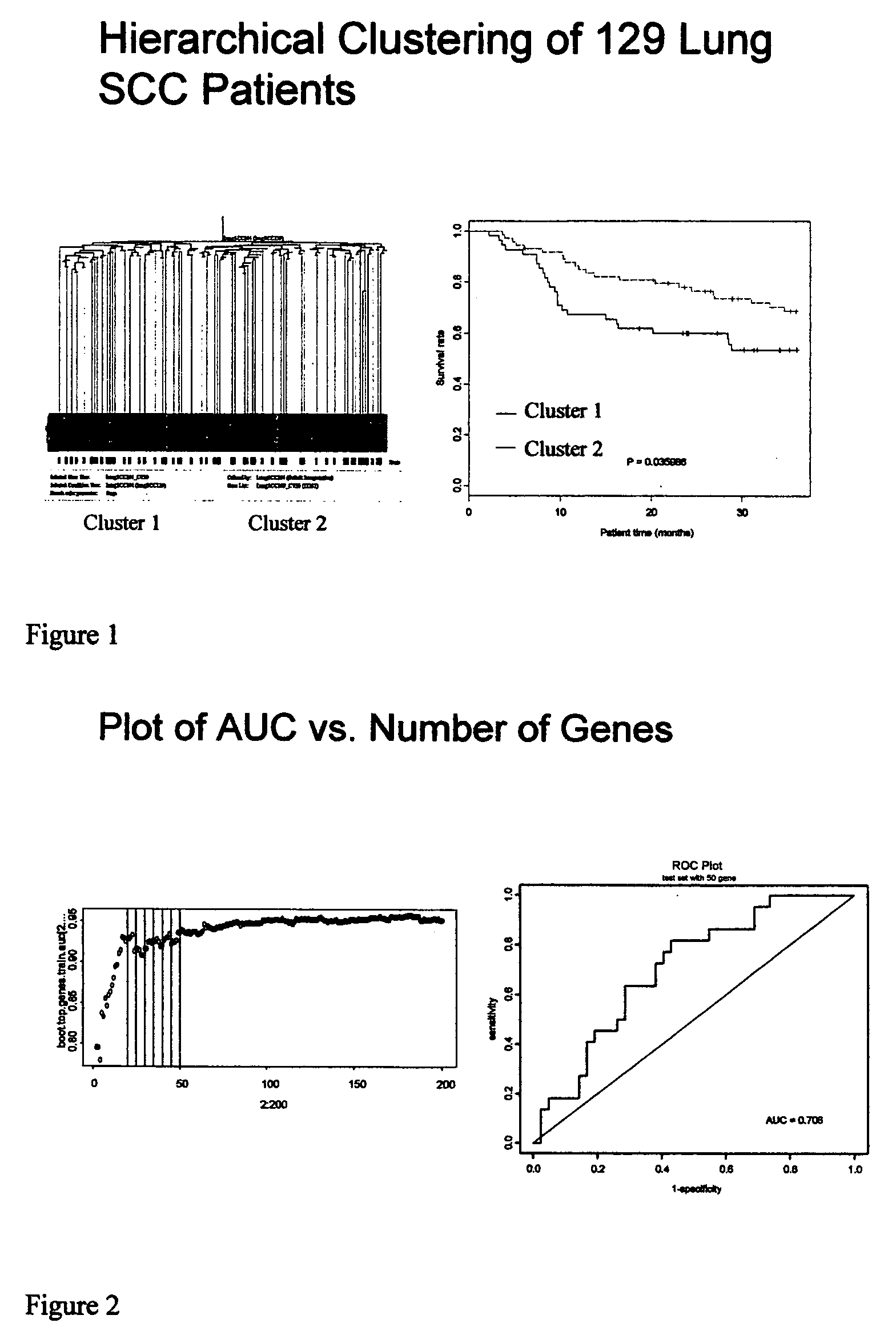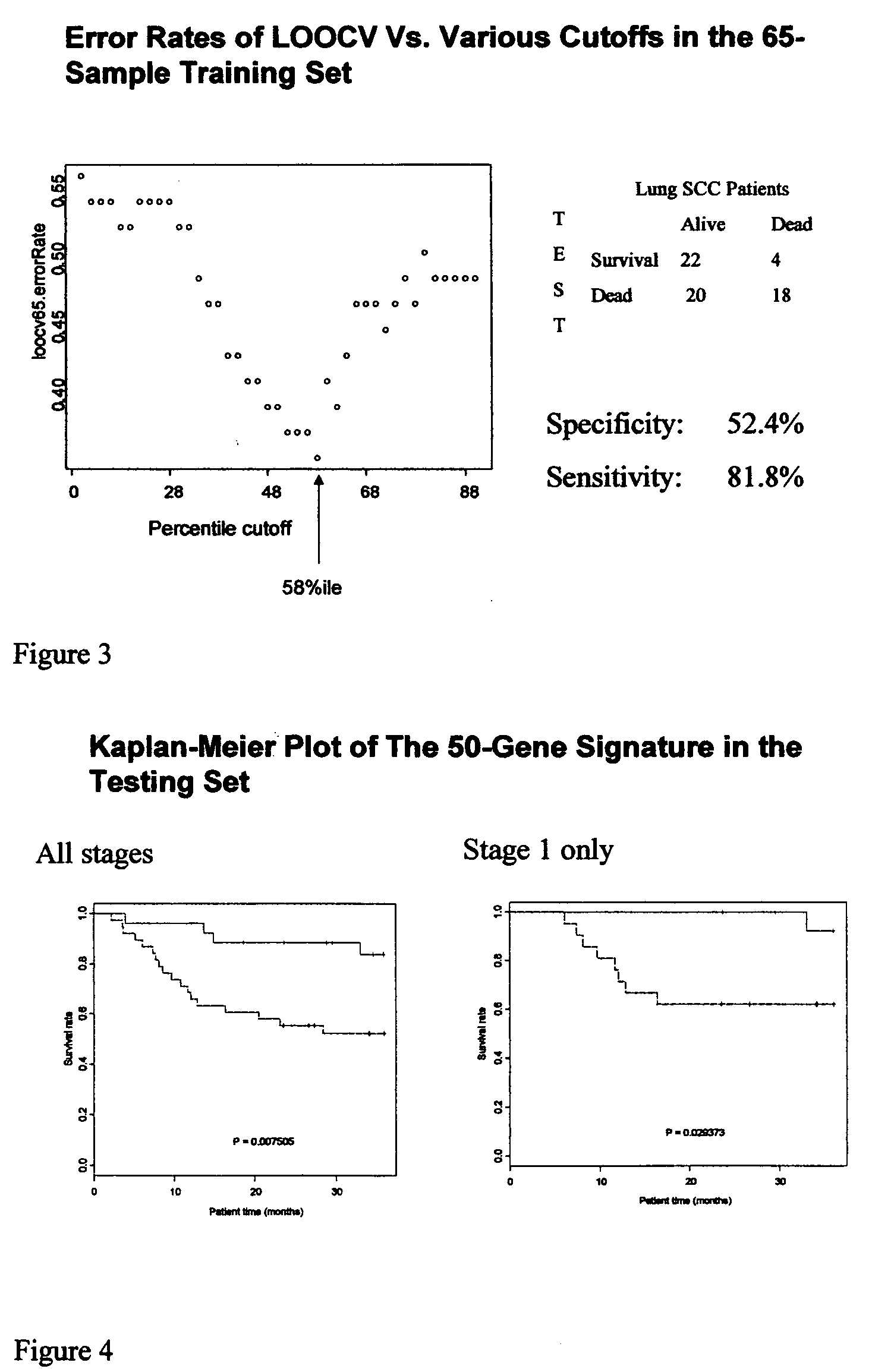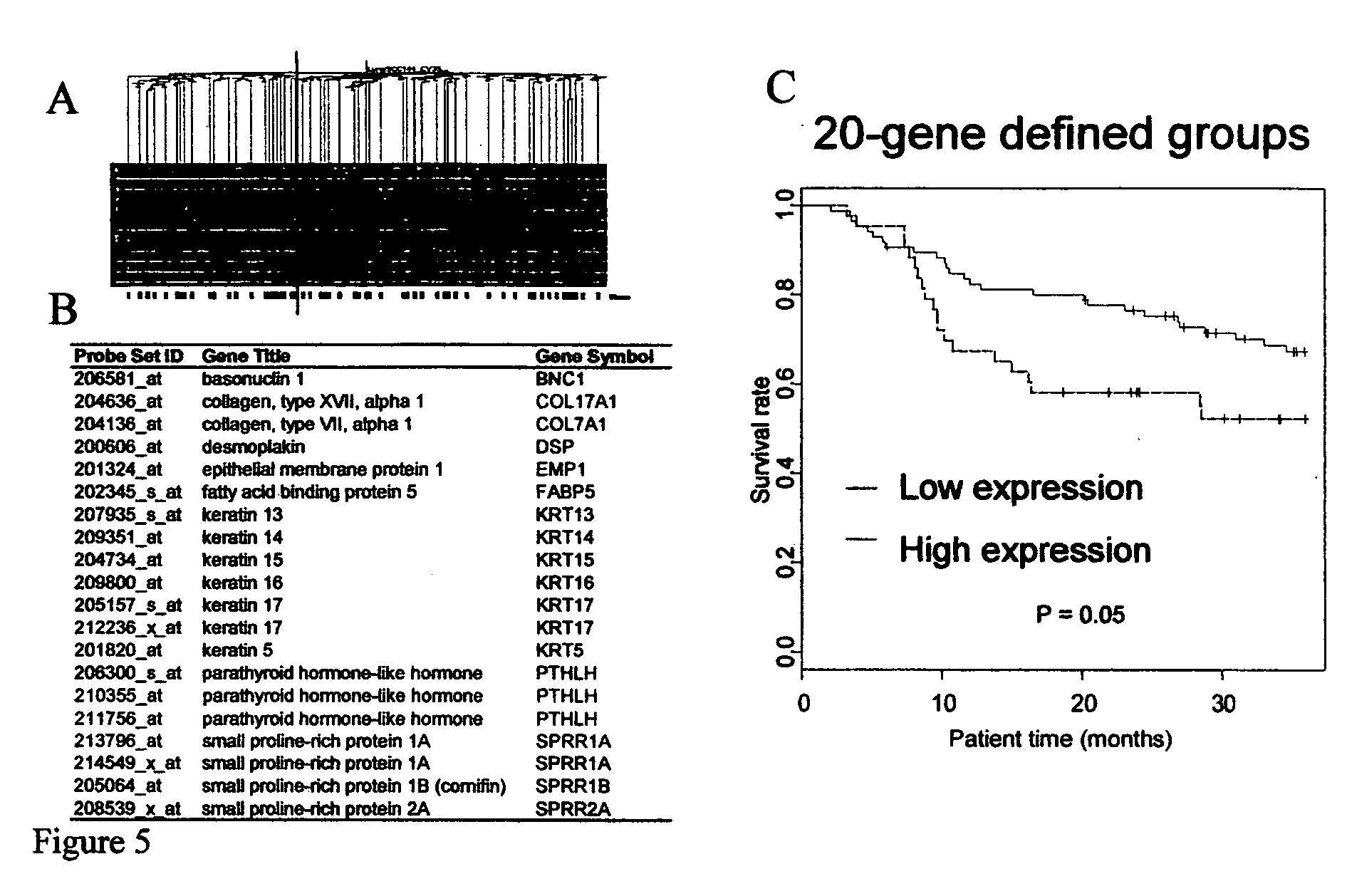Lung cancer prognostics
a lung cancer and prognostic technology, applied in the field of lung cancer prognostics, can solve the problems of not being able to identify patients with a high risk of relapse, and affecting the survival rate of patients
- Summary
- Abstract
- Description
- Claims
- Application Information
AI Technical Summary
Benefits of technology
Problems solved by technology
Method used
Image
Examples
example 1
Methods
[0066] 134 fresh frozen, surgically resected lung SCC and 10 matched normal lung samples from 133 individual patients (LS-71 and LS-136 were duplicate samples from different areas of the same tumor) from all stages of squamous cell lung carcinoma were evaluated in this study. These samples were collected from patients from the University of Michigan Hospital between October 1991 and July 2002 with patient consent and Institutional Review Board (IRB) approval. Portions of the resected lung carcinomas were sectioned and evaluated by the study pathologist by routine hematoxylin and eosin (H&E) staining. Samples chosen for analysis contained greater than 70% tumor cells. Approximately one third of patients (with equal proportions for each stage) received radiotherapy or chemotherapy following surgery. Seventy-seven patients were lymph node negative. Follow-up data were available for all patients. The mean patient age was 68±10 (range 42-91) with approximatel...
example 2
Identification of a Robust Prognostic Signature
[0078] Although we used a bootstrap method to avoid random sampling issues in the training-testing method, a more robust prognostic signature might be identified if we use all 129 samples in the training set. Therefore, a gene signature was also selected by bootstrapping the entire 129-patient dataset. Genes were ranked based on their mean P value and the top 100 genes were identified (Table 4). Twenty-three of these genes were in common with the top 50 genes identified from the training-test method.
[0079] We had data on time to relapse (TTR) for 16 patients. The mean TTR was 21.7 months with 88% of patients relapsing within 3 years. Since the majority of patients who die after 3 years die from non-cancer related causes we chose a cutoff of 36 months for classifying patients who will have a lung cancer-related death. Our defined classifiers were tested with or without a 36-month cutoff. The signatures had a better performance in the ...
example 3
Identification of a High-Risk Sub-Group of SCC Patients
[0080] The unsupervised hierarchical clustering described above identified two main groups of patients that differed significantly in their overall survival. A bootstrap analysis performed on the two patient groups found 121 genes (non-unique) whose expression levels were significantly different between the high- and low-risk groups (p 3-fold; Table 5). Interestingly, the majority of these genes (118) were down-regulated in the high risk group (FIG. 5A, cluster 1). Pathway analysis demonstrated that genes involved in epidermal development functions, including keratins and small-proline rich proteins, were significantly enriched for in this dataset. These data, shown in Table 6, indicate that there are two major subtypes of SCC one of which has a gene expression profile consistent with poor differentiation and as such tends to be more aggressive. When the genes only involved in epidermal differentiation (FIG. 5B) were used to c...
PUM
| Property | Measurement | Unit |
|---|---|---|
| Fraction | aaaaa | aaaaa |
| Fraction | aaaaa | aaaaa |
| Volume | aaaaa | aaaaa |
Abstract
Description
Claims
Application Information
 Login to View More
Login to View More - R&D
- Intellectual Property
- Life Sciences
- Materials
- Tech Scout
- Unparalleled Data Quality
- Higher Quality Content
- 60% Fewer Hallucinations
Browse by: Latest US Patents, China's latest patents, Technical Efficacy Thesaurus, Application Domain, Technology Topic, Popular Technical Reports.
© 2025 PatSnap. All rights reserved.Legal|Privacy policy|Modern Slavery Act Transparency Statement|Sitemap|About US| Contact US: help@patsnap.com



